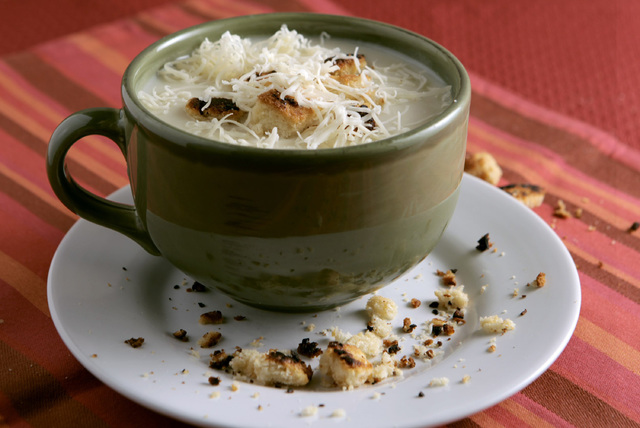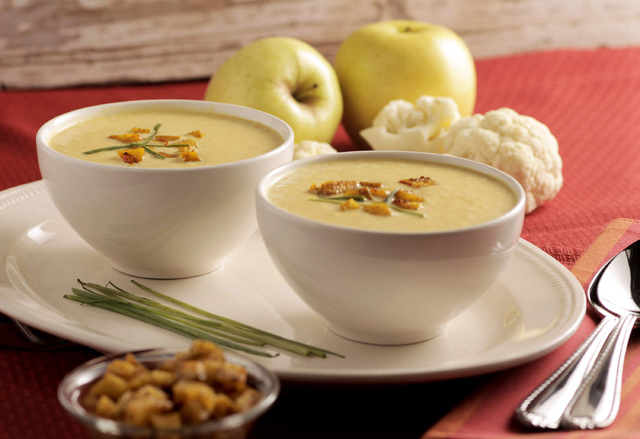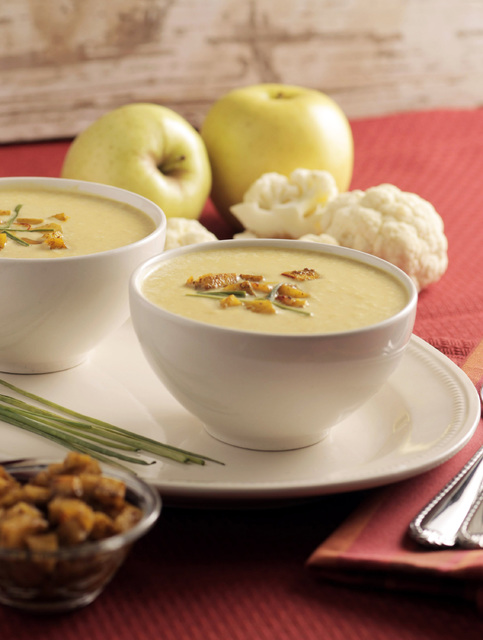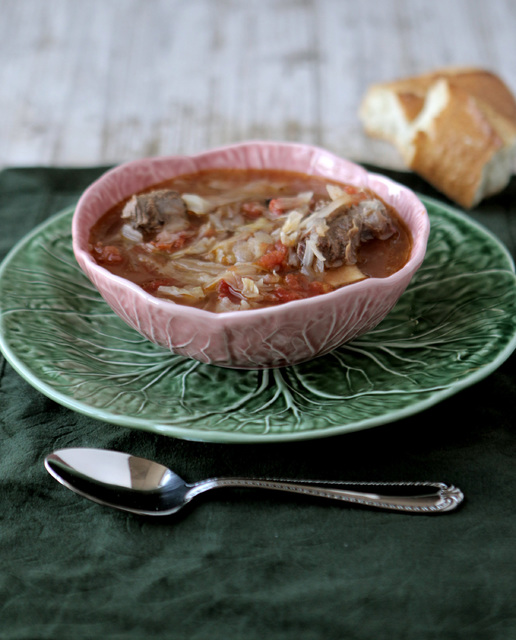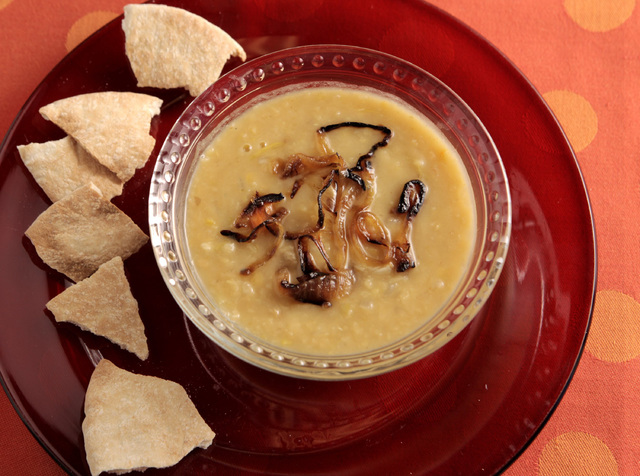The art of soup: 4 recipes to warm you
It wasn’t the best advertising line, but it was undeniably true: Soup is good food.
On a cool night when the wind is blowing, and the chill sinks deep into your bones, what is it that you turn to? Soup. When you want something warming and comforting after a difficult day, what is it that you most desire? Soup. When you have a cold, what is the only thing that can make you feel better? Soup, especially if it has chicken and noodles in it.
It restoreth the soul. And of course it is always best when your cup runneth over.
At its most elemental level, soup is just water with a bunch of other stuff cooked in it. And that is what makes it so exciting. You can have a free hand to do with it what you will.
Take, for instance, my mother’s cabbage soup, which is still one of my favorite soups ever. When she and my father were first married, she asked if he had any favorite dishes he wanted her to prepare. He said he loved a cabbage soup from a famous local delicatessen.
My mother called the wife of the deli owner and asked for the recipe. The woman was happy to oblige — but she only knew how to make it for a restaurant, and even then her measurements were inexact.
So my mother mixed a bit of this and a handful of that, then threw in a dash of something else, and ended up with a cabbage soup. She served it to my father, who said it wasn’t at all like the original soup from the delicatessen. It was better. She has been making it ever since.
Many years ago, I asked my mother for the recipe. She wasn’t very specific. She said to use a bit of this and a handful of that and maybe a dash of something else.
I took down as much of this nonrecipe as I could and tried making it for myself. It tasted remarkably like my mother’s.
What I love so much about the soup are its contradictions. It is a thin broth, but it is filled with hearty pieces of beef and cabbage. It is made with a lot of tomatoes, but it isn’t remotely a tomato soup. It is both sweet and sour. And it has seasonings that you would not expect to find in soup, such as allspice and cloves.
It is unlike other soups you have had, and it is certainly unlike the soup they sold at the delicatessen, but it is little short of wonderful.
Next, I made an onion soup, but I didn’t want a familiar, traditional French onion soup. So I went next door to Belgium to cook a Flemish onion soup.
What is the difference? There are several, beginning with the onions that are only lightly browned, yielding a taste that is less sweet and more oniony. The soup is flavored with potatoes and then pureed, and only then is it enlivened with milk.
Even with croutons and cheese on top, it is a completely different soup — and not just because the cheese is sprinkled rather than melted. This version is a much lighter soup, with a comforting onion flavor that is subtle and beautifully tempered by the blended potatoes. It’s irresistible without being overpowering.
Subtlety is also the key to a gorgeous curried cauliflower soup. Curry and cauliflower are a classic combination, and so are curry and cream — though this soup uses relatively little cream.
The other main ingredient in this soup is apples. Golden Delicious apples, which the recipe recommends, are sweet but not too sweet, just enough to balance the heat from the curry.
All together, the soup is smooth and almost silky. It is a dish to serve when you want to impress someone, but it is easy enough that you’ll want to make it for yourself.
Finally, I cooked the best lentil soup I have ever made.
This one begins with red lentils, which cook faster and more thoroughly than the more popular green kind. They dissolve into a kind of thickness, like a puree without having to puree.
The spice is not heavy — a little cumin and coriander, plus garlic, and a pinch of pepper. What makes the soup stand out so much is the juice from a lemon, which brightens the flavor and brilliantly contrasts with the earthiness of the lentils.
Try it and you won’t want to stop eating it. It’s M’m! M’m! good.
Curried cream of cauliflower and apple soup
Recipe from “Cooking With Daniel Boulud,” by Daniel Boulud; serves 4-6.
For the curried cream of cauliflower
4 cups chicken stock
1 1/2 tablespoons sweet (unsalted) butter
1 cup onions, chopped
2 teaspoons Madras curry powder
1/2 teaspoon saffron threads or 2 pinches saffron powder
1 cup Golden Delicious apple (or other apple), peeled, split, cored and sliced
4 cups cauliflower (about 1 small to medium head), broken into florets
1 cup heavy cream
Salt and pepper
1 tablespoon chives, minced
For the curried apple dice
1 cup Golden Delicious apple (or other apple), peeled, split, cored, in 1/4-inch dice
1 teaspoon Madras curry powder
1/4 teaspoon saffron threads or 1 pinch saffron powder
Salt and pepper
For the curried cream of cauliflower: Warm the chicken stock over medium heat. Melt the butter in a heavy pot over medium-low heat. Add the onions, curry powder and saffron and sweat for 2 minutes, stirring often. Add the sliced apple and sweat for 5 more minutes, stirring often. Add the cauliflower and warm chicken stock and bring to a boil.
Boil until the cauliflower is tender when pierced with a knife, about 20 minutes. Add the cream and cook for 3 more minutes. Salt and pepper to taste. Transfer the soup in batches to a blender or food processor and purée at high speed until very smooth. Keep warm until ready to serve, or refrigerate when cool and reheat just before serving.
For the curried apple dice: Place the apple dice with 1 tablespoon of water in a pan over medium heat. Add the curry powder and saffron, and season to taste with salt and pepper. Mix well, cover with a lid, and cook for 3 minutes. Strain and keep warm on the side.
Per serving (based on 6): 273 calories; 20 g fat; 12 g saturated fat; 58 mg cholesterol; 7 g protein; 19 g carbohydrate; 10 g sugar; 3 g fiber; 263 mg sodium; 62 mg calcium.
Mom’s cabbage soup
Serves 8.
1 1/2 pounds short ribs
2 tablespoons oil
1 large onion, sliced thin
7 cups water
1/2 small head cabbage, sliced thin
12 whole allspice berries
2 (14 1/2-ounce) cans stewed tomatoes
1/4 cup plus 1 tablespoon brown sugar
1/4 cup red wine vinegar
1/4 teaspoon black pepper
1/2 teaspoon ground allspice
Trim the fat from the ribs. In a large pot or Dutch oven, heat oil over medium-high heat. Add ribs and onions, season with salt and pepper, and cook until the beef is browned on all sides and the onions are translucent, about 8 minutes. Pour out the fat.
Add water, cabbage and allspice berries. Bring to a boil, then lower the temperature and simmer 30 minutes, skimming foam off the top when necessary.
Break up tomatoes with your hands or in a blender. Add tomatoes, brown sugar, vinegar, pepper and ground allspice. Bring to a boil, lower temperature and simmer until meat is completely cooked and has pulled away at least 1/2 inch from the edge of the bone, about 30 minutes. Taste and correct for salt and pepper. If the broth is too weak, continue simmering until the flavors are more concentrated.
Per serving: 188 calories; 7 g fat; 2 g saturated fat; 20 mg cholesterol; 8 g protein; 22 g carbohydrate; 16 g sugar; 3 g fiber; 312 mg sodium; 73 mg calcium.
Flemish onion soup with cheese
Recipe from “Everybody Eats Well in Belgium Cookbook,” by Ruth Van Waerebeek, with Maria Robbins; serves 6.
4 tablespoons (1/2 stick) unsalted butter
2 pounds yellow onions, thinly sliced
2 large baking potatoes, peeled and cubed
4 cups water
1 bay leaf
1 cup milk
Salt and white pepper, to taste
Ground nutmeg, preferably fresh, to taste
3 tablespoons minced chives, optional
Croutons, optional
3/4 cup grated Gruyere cheese
Melt the butter in a heavy soup pot over low heat. Add the onions and increase the heat to medium. Cook stirring occasionally, until translucent, 10 minutes. Let the onions brown slightly for a more pronounced flavor.
Add the potatoes, water and bay leaf. Bring to a boil and reduce the heat. Simmer, covered, until the potatoes are soft, 20 to 25 minutes.
Discard the bay leaf and let the soup cool slightly. Press the soup through a food mill or purée in batches in a blender or food processor until smooth.
Return the purée to the pot and gradually stir in the milk. Season with salt, pepper and nutmeg.
Reheat the soup gently before serving. Do not let it boil. Serve hot, in warmed soup plates. If desired, sprinkle with chives and float croutons in each soup plate. Place the grated cheese in a bowl and pass at the table.
Per serving: 223 calories; 14 g fat; 8 g saturated fat; 39 mg cholesterol; 8 g protein; 19 g carbohydrate; 3 g sugar; 2 g fiber; 154 mg sodium; 208 mg calcium.
Lentil soup
Adapted from “The New Book of Middle Eastern Food,” by Claudia Roden; serves 6-8.
3 tablespoons olive oil
1 large onion, chopped
3 cloves garlic, crushed
1 to 1 1/2 teaspoons cumin
1 to 1 1/2 teaspoons ground coriander
Pinch of cayenne pepper
1 3/4 cups split red lentils
Bunch of celery leaves, chopped, or 1 rib celery, sliced
1 carrot, finely chopped
2 quarts chicken stock
Salt and pepper
Juice of 1 lemon
To garnish
1 1/2 to 2 large onions, sliced
2 to 3 tablespoons extra-virgin olive oil
1 to 1 1/2 pita breads to make croutons, optional
1 lemon, sliced into wedges, for serving, optional
Heat oil in a large saucepan over medium heat. Add onion and cook until softened. Add the garlic, cumin, coriander and cayenne pepper, and stir.
Add the lentils, celery leaves and carrot, pour in the stock, and simmer 30 to 45 minutes until the lentils have largely disintegrated. Add salt and pepper, and water if the soup needs thickening; it should be thin, like light cream. Stir in the lemon juice.
For the garnish, fry the onions in the oil, first covered over low heat, stirring occasionally, then uncovered over medium and high heat, stirring often, until very brown and almost crisp.
Split and open the pita breads and toast in the oven or in a toaster oven, until they are crisp and lightly browned. Break them into small pieces to make croutons.
Serve the soup very hot. Garnish each serving with a tablespoon of fried onions and pass the lemon wedges and croutons, if you like, for people to help themselves.
No nutritional information availab.e


